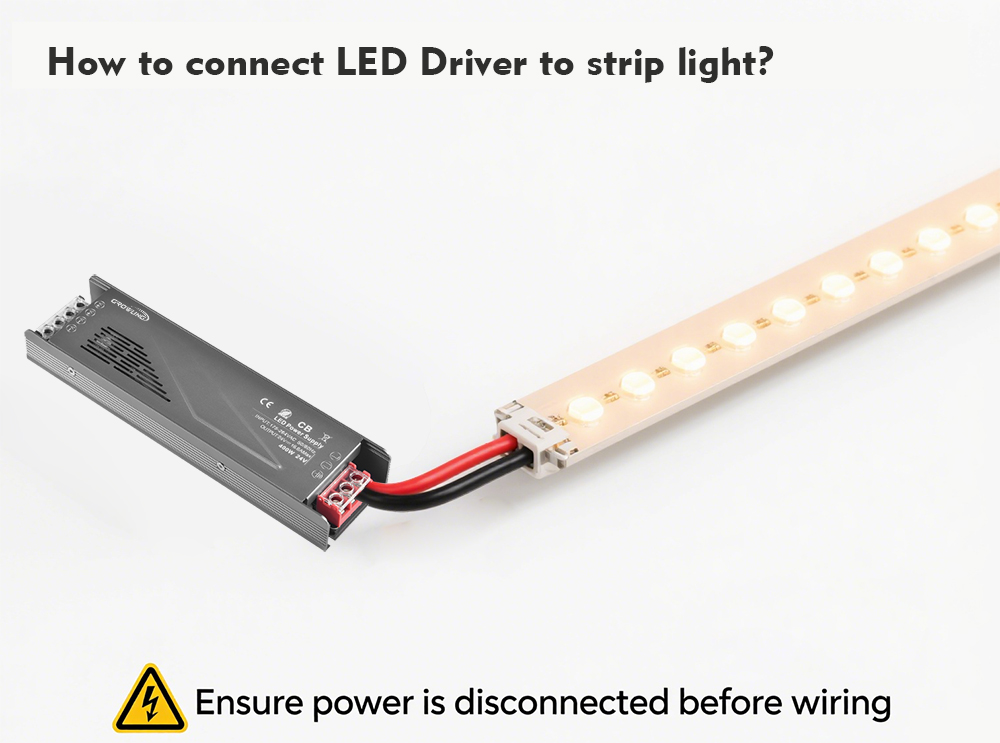What LED Driver Do I Need?
To decide what size LED driver you will need to meet your requirements, you will need to know:
- The Voltage of the mains power supply you will be using
- The total power consumption of the LEDs in the system
- Whether the LEDs require a steady Voltage or a steady current
Any other technical factors that might affect the operation of the LED drivers – for example, the need for precise colour control or any potential exposure to water. Water resistance is indicated by the LED’s IP rating – higher numbers are more resistant. An IP rating of 40 would suggest suitability for use in kitchens or other rooms where periodic splashing may occur. Meanwhile, a high IP rating of 67 indicates a driver suitable for outdoor use. Drivers with an IP rating of 20 are for use in dry indoor spaces only
How to Connect an LED Driver to Power?
Although wiring an LED driver to mains power is straightforward, we would recommend that a qualified electrician inspects this to make sure the connections have been made safely.
The process of connecting an LED driver to power consists of connecting the neutral and line wires to the PRI (primary) side of the driver, attaching the former to the N terminal and the latter to the L terminal. The positive and negative wires should then be taken from the LED lighting and attached to the matching terminals on the SEC (secondary) side of the driver.
How to Wire LED Drivers and Transformers
Often, LED drivers and transformers do not include terminals, and so users must directly wire a plug to the end of the cable. Please note that wiring should only be carried out by trained and qualified individuals.
- Check the LEDs are in place and turn off the power
- Open the driver or transformer using a screwdriver
- Connect the plug using suitable cabling and wire nuts (colour-coded cabling screws). The black positive cable from the transfer should be connected to the 220V AC feed in the socket, the green cable to the grounding wire and the white negative wire to the neutral connection. It may be necessary to strip back one end of the LED cabling, depending on the brand
- Apply terminal connectors to the cabling for a firm hold
- If necessary, terminate the positive and negative wires that connect to integrated circuitry in the driver or transformer
- Close the unit and test it in a well-ventilated area
How to Test an LED Driver
There are three standard ways to test that an LED driver is functioning correctly:
- Connecting it to the LEDs and observing the results
- Using electronic load testing equipment – trying, for example, constant resistance (CR) or constant voltage (CV) modes
- Applying a load resistor (a device that impedes current) to assess the power supply
Once again, if in doubt, please do not attempt to test the component and consult a fully qualified engineer instead.
How Many LEDs Per Driver?
The total number of individual LEDs is less important than the total power they require.
To work correctly and have a reasonable lifespan, LEDs require the right amount of wattage. Too much will cause them to burn out, while too little will prevent them from working at all. But the driver components can also be stressed by power-hungry LEDs.
Therefore, drivers should ideally not be connected to LEDs that consume more than 80% of the driver’s maximum output. For example, a driver with a maximum output of 50 Watts should be attached to LEDs with a maximum collective output of 40 Watts.
What is the Difference Between an LED Driver and a Transformer?
LED transformers have a higher power output and so are used with larger LED lighting systems – for example, longer strips – which require higher Wattage levels than that provided by LED drivers to operate correctly and safely.
What is an LED Driver IC?
An LED driver integrated circuit (IC) provides the processing power necessary to allow it to respond to the changing power demands of the attached LEDs.
Do I Need a Transformer for LED Lights?
To work out whether you need a driver or a transformer, multiply the length of the system by the Watts required per metre, for example:
10 metres x 30 Watts per metre = 300 Watts
This exceeds the maximum Wattage output of an LED driver (200 Watts), so a transformer will be required. The collective power requirement of an LED system should be less than the transformer’s maximum capacity.
Can LEDs Work on AC?
Sometimes. Most LEDs are built to run on low power direct current (DC) but some high capacity models have been developed which do run on alternating current (AC).
Contact info@led-sourcing.com to get free manufaturers now:)

